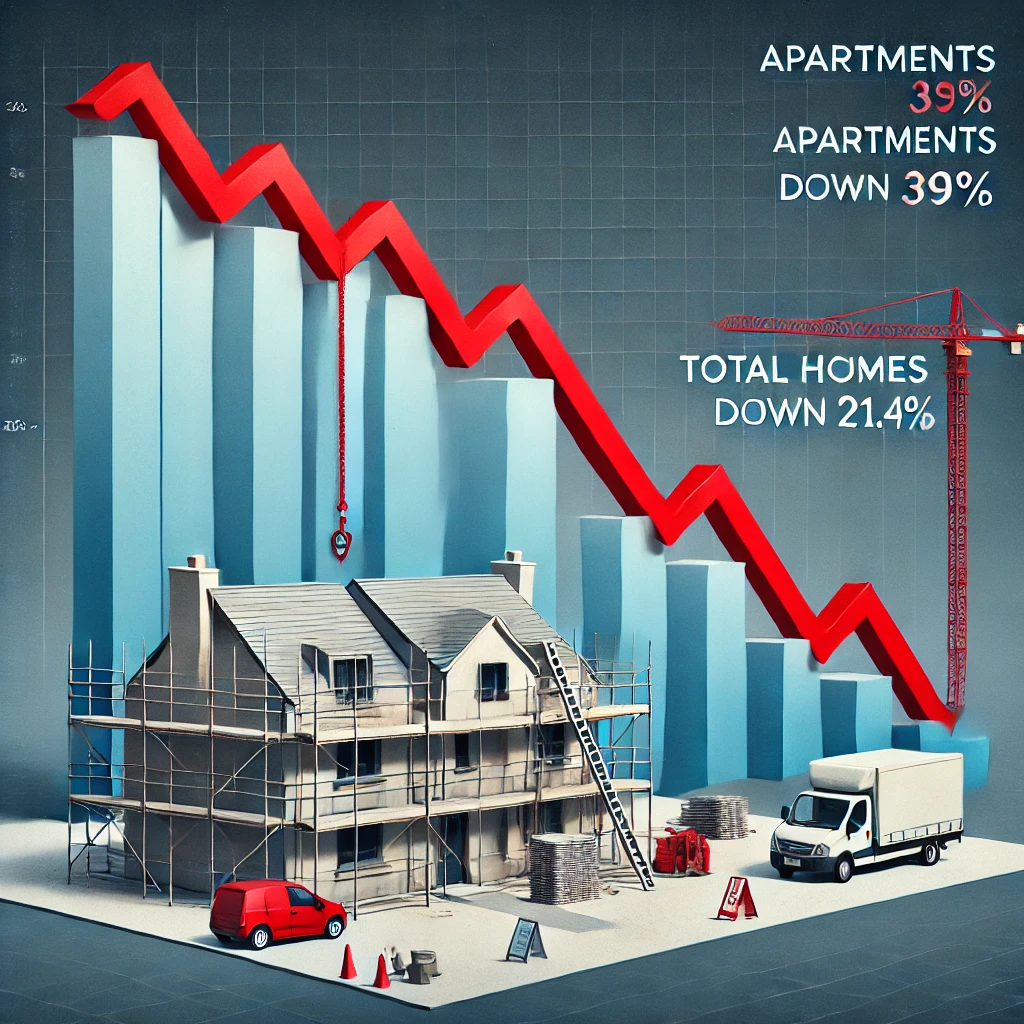Irish Government’s Housing Targets Face Challenges Amid Central Bank Projections
The Irish Government’s ambitious housing targets are under scrutiny following the Central Bank’s latest projections, which suggest that the country may fall short of its goals over the next few years. The coalition government aims to deliver 303,000 homes by the end of 2030, ramping up from 41,000 homes this year to 48,000 by 2027. However, the Central Bank’s first quarterly bulletin of 2025 forecasts that housing completions will reach only 35,000 this year, 40,000 in 2026, and 44,000 in 2027. This shortfall would leave the government 13,000 homes behind its targets by the end of 2027.
The remaining targets set by the government are 43,000 homes in 2028, 58,000 in 2029, and 60,000 in 2030. These projections have sparked criticism, especially since the government was previously cautioned about potential shortfalls by the Central Bank ahead of the General Election. During the election campaign, senior coalition figures claimed that nearly 40,000 new homes would be built in 2024, significantly exceeding the target of 33,450. Despite these claims, the Central Bank had projected only about 32,000 completions, and the Central Statistics Office later confirmed that just 30,330 homes were completed last year.
The government defended its reliance on estimates from Deutsche Bank and Cairn Homes rather than the Central Bank’s projections during the election campaign. Tánaiste Simon Harris acknowledged the need to address “blockages” in housing delivery. He noted that while the Central Bank has sometimes underestimated or overestimated housing completions, the focus must remain on achieving the target of 300,000 homes over the next five years. Harris emphasized the importance of exploring disruptive measures, particularly in water infrastructure, to boost housing supply. He advocated for increased funding for Irish Water from the Apple fund, contingent on demonstrable improvements in housing supply.
The Central Bank identified several factors constraining housing supply, including low productivity in the construction sector, delays in utility connections and the planning system, and a shortage of zoned and serviced land in high-demand areas. Although housing commencements rose by nearly 69,000 units in 2024, uncertainty remains over how many of these commencements will translate into completed dwellings by 2027.
Taoiseach Micheál Martin, speaking before a Cabinet meeting, reiterated the government’s commitment to surpassing the Central Bank’s projections. He acknowledged the need for approximately 50,000 homes per year and highlighted the importance of private sector investment alongside substantial state investment in housing. Martin emphasized the necessity of creating a stable investment environment to encourage further private sector involvement.
When questioned about accepting the Central Bank’s projections, Martin pointed out that the bank had previously underestimated housing delivery. Nonetheless, he stressed the importance of building more houses, regardless of forecasts, to meet the country’s housing needs.
In conclusion, the Irish Government faces significant challenges in meeting its housing targets amid the Central Bank’s projections. Addressing these challenges will require a multifaceted approach, including increased investment in infrastructure, private sector involvement, and overcoming obstacles in the planning and construction sectors. The government’s commitment to delivering more homes remains steadfast, but achieving these goals will necessitate strategic planning and collaboration across various sectors.







